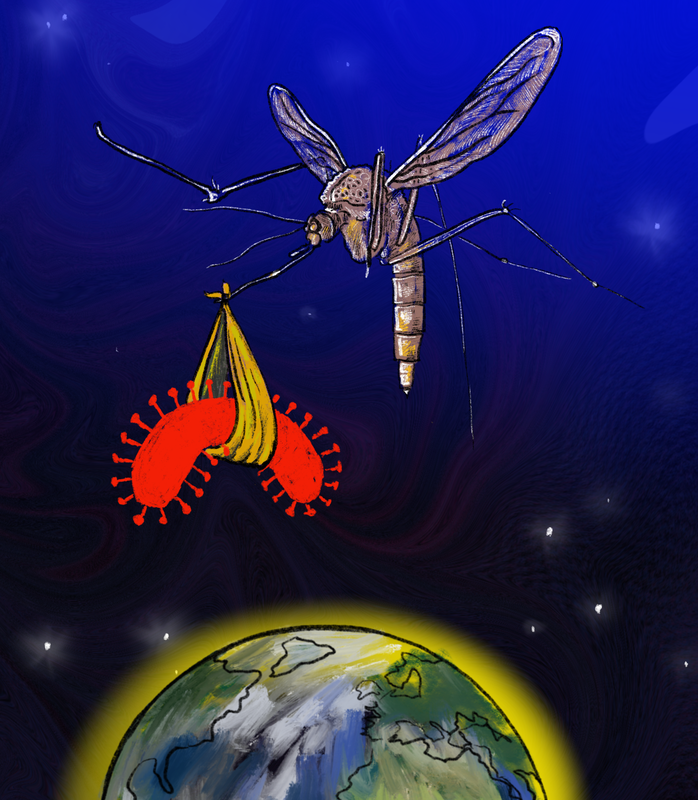|
By Victoria Comunale
Sleep and memory-formation share a fickle relationship. We are told to get plenty of rest before a test because sleep plays a crucial role in learning by aiding memory consolidation. Yet, sometimes, after a night of rest, we can completely forget about something that was on our minds the night before. Sleep’s role in memory consolidation and memory loss has been explored by neuroscientists before, but the balance between these two dueling occurrences, as well as the role of the brain waves in this phenomenon, still remain somewhat of a mystery. Researchers at the University of California San Francisco (UCSF), recently published a study examining the role of different kinds of brain waves in memory consolidation and forgetfulness in rats. In this experiment, the researchers trained rats to control a feeding tube. This control was a skill that was gradually learned by the rat, and memory consolidation played a crucial role in this process. Successfully completing the task required the rat to move the tube from point A to point B within 15 seconds. Since this learning process involved the motor cortex, the researchers studied the brain waves in this area of the brain during non-REM sleep. There are several stages of non-REM sleep that can be differentiated by distinct patterns of brain wave activity. These stages are arranged from lightest to deepest sleep, and the waves themselves arise from the neural activity of a region of the brain known as the thalamus. The first stage of non-REM sleep, the lightest stage, is characterized by both alpha and theta waves. In stage two, theta waves dominate brain activity but are interrupted by brief bursts of higher frequency brain waves known as sleep spindles. The third and fourth stages of non-REM sleep, the deepest stages, also feature sleep spindles, but are predominantly characterized by delta waves and slow oscillation waves, which researchers were most interested in. In order to study the effects of these waves, they employed a recent technique that has grown in popularity in the field of neuroscience: optogenetics. Utilizing this technique, the researchers were able to directly interfere with the activity of neurons in the brain and interrupt the activity of the targeted brain waves, thus establishing a causal rather than correlational relationship. The role of slow oscillation waves has long been suspected of playing a role in memory consolidation, yet the function of delta waves, which are more prevalent than slow oscillation waves, is still unknown. When the researchers used optogenetics to interfere with the slow oscillation waves, the success rate of the rats in the tube moving task was much lower than that of the control group. Yet, interfering with delta waves had the opposite effect. The rats were able to complete the task with a higher success rate than the control group. From these remarkable results, the researchers concluded that these dueling brain waves have opposite effects during sleep. This conclusion was unexpected, since these brain waves are found in the same stage. Therefore, memories both strengthened and weakened during non-REM sleep. The difference in memory consolidation between delta waves and slow oscillations is stark and undeniable, contradicting prior speculations that they may have similar functions. The researchers also focused on specific bursts of activity associated with slow wave oscillations called sleep spindles. These spindles are already known to play an essential role in sensory processing and long term memory consolidation. Because delta waves, which are associated with memory loss, are more prevalent during non-REM sleep, the researchers postulated that these spindles, coupled with the effects of slow oscillating waves, aid in balancing memory consolidation against the memory loss associated with delta waves. These results can also have implications for phenomena observed in humans, especially aging. It has been experimentally demonstrated that slow-wave activity has lower amplitude in the elderly. If the results from the UCSF group can be translated to the human brain, this means that the elderly are less likely to have consolidation benefits during sleep because of a reduction in slow oscillations and spindles. It is still unclear if this newfound information concerning the dueling brain waves can be applied as a useful tool in strengthening human memories, considering that the weakening of less important memories is necessary for memories of higher importance to be strengthened. Nevertheless, these results help bring us one step closer in understanding the complicated activities of our brains.
0 Comments
By Dapo Lapite
Illustration by Lizka Vaintrob The Roman empire, the Mayan Empire, and the Chinese empires. Every single one of these civilizations succumbed to the spread of pathogens, and in today’s world, there is a chance of this disaster repeating. The changing climate and highly advanced modes of international transportation have led to a spread of mosquitoes, ticks, and other organisms carrying dangerous pathogens. Due to the potential spread of an array of diseases, the United States must fund research aimed at finding vaccines, cures, and other medical advances in order to prevent a medical crisis. It is imperative to examine the history of plagues in order to understand how diseases have impacted civilizations in the past. On average, somewhere in the world, a new infectious disease has “emerged every year for the past 30 years.” Recently, the Ebola crisis indicated what could recur. Ebola became a heavily discussed topic in 1976 when a new illness emerged in Yambuku, in the Democratic Republic of the Congo. At this time, Jean-Jacques Muyembe was the only virologist in the Congo. Muyembe shipped blood samples to the Centers for Disease Control and Prevention in Atlanta, where the scientists then identified the virus. Ebola is a disease that can kill “not just the very young, old, and sick,” but also the strong and fit, by triggering a violent immune response. In 2014, Ebola truly caused mass chaos as hospitals ran out of beds, cities, and coffins. The best example of the United States’ lack of preparation is the Asian longhorned tick. The Asian longhorned tick is the first invasive tick to spread to the United States in around 80 years. It is native to China, Japan, Russia, and the Korean Peninsula and has also found its way to Australia and New Zealand. In Asia, the tick carries a virus that causes human hemorrhagic fever, which kills around 30 percent of its victims. In 2013, South Korea reported 36 cases and 17 fatalities. This particular virus is not found in the United States, but it is extremely similar to the Heartland Virus, another life-threatening tick-borne disease cycling through the United States. Diseases spread by ticks are typically underreported. As a result, there are no proven measures that can be used to control several vector-borne diseases transferred by the black-legged tick, which spreads at least seven human pathogens in the United States, including bacteria that cause Lyme disease. Climate change is increasingly becoming a problem because it is a factor in the emergence of infectious diseases. The warming temperatures make the environment in the United States more hospitable for the ticks and other vectors. And according to the Baylor College of Medicine, as climates warm and habitats are altered, diseases can spread into unforeseen geographic areas. Both ticks and mosquitos are prime examples of species that have expanded their range into regions where they have not been seen. Illness from mosquito, tick, and flea bites “more than tripled” in the United States from 2004 to 2016. Other parts of the world also fall victim to these diseases through the high amounts of travel taking place. For example, the chikungunya disease, an insect-borne disease, was previously confined to tropical regions around the Indian Ocean. Yet there have been several cases of chikungunya disease imported into the United States by international travelers, including one case in Louisiana. Similarly, Severe Acute Respiratory Syndrome (SARS) first appeared in China in 2002 and quickly spread to other countries near China, and it made it as far as Canada because of air travel. Ultimately, SARS infected 8000 people and killed 800 people before an unprecedented global response halted the disease. The major underlying causes of the increase in vector-borne diseases are growing travel, trade, urbanization, population growth, and increasing temperature. The United States is prone to be shortsighted and forgetful when it comes to the influx of diseases and this trend has only continued in recent years. Currently, if a massive spread of diseases hit the United States, mass panic would ensue due to the lack of preparation and funding. There was a development of vaccines and antimicrobial drugs throughout the last decade that created hope that infectious diseases could be controlled, but there was a realization that infectious diseases continue to emerge and re-emerge. This provides challenges for infectious disease research. At first, it seemed that the United States would aim at acting proactively when they committed one billion dollars to the effort in 2014. But that now looks uncertain; President Trump’s budget for 2019 cut 67 percent from the current annual funding. With less funding, the CDC will be forced to withdraw from several countries, resulting in a loss of jobs and a need for vital medical knowledge in these regions. With all the evidence pointing towards another plague, it is imperative that the United States begin to reinvest in the fight against potential diseases. |
Categories
All
Archives
April 2024
|


